The faces of Kang: What Marvel comics can tell us about the MCU's new supervillain
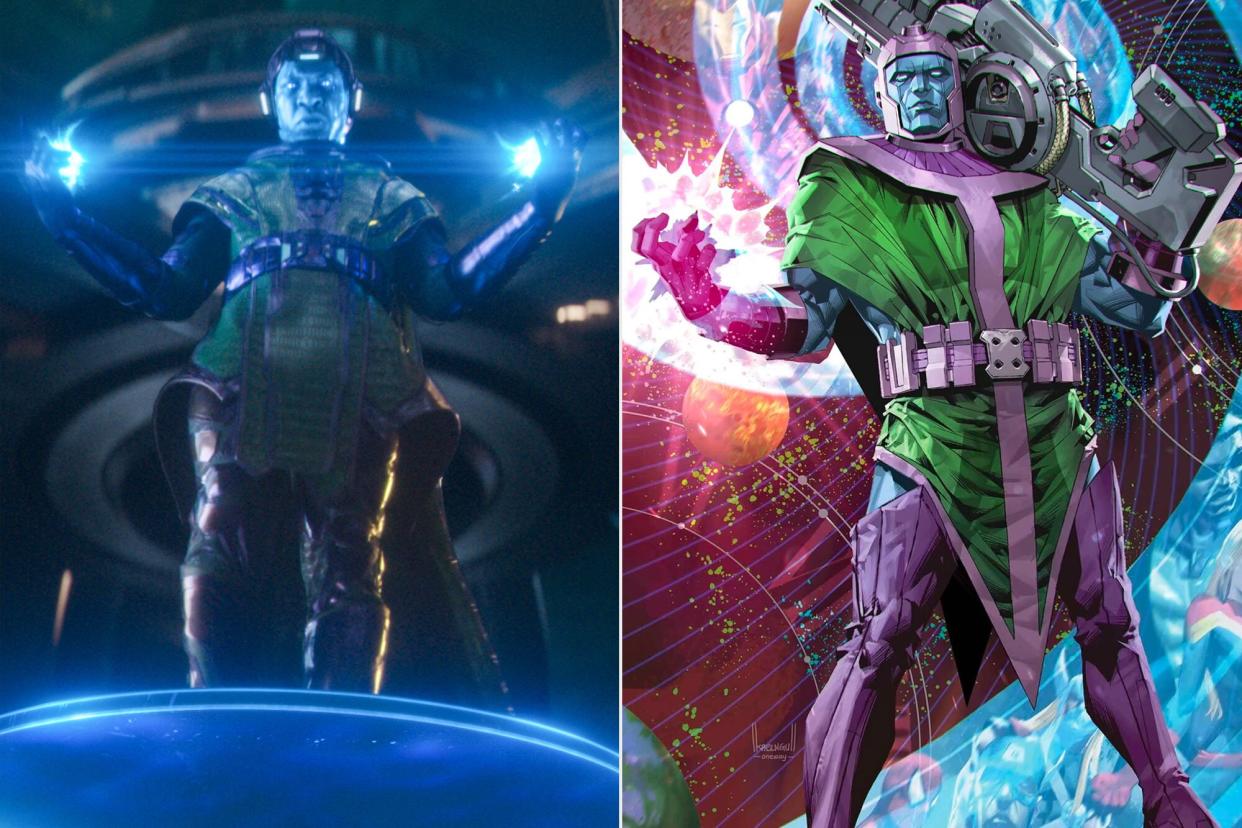
- Oops!Something went wrong.Please try again later.
- Oops!Something went wrong.Please try again later.
Marvel Studios; Marvel Comics Jonathan Majors as Kang the Conqueror vs. the character as seen on the cover of Marvel's 'Timeless' #1.
Kang is here, Kang is coming. Following the blockbuster opening weekend of Ant-Man and the Wasp: Quantumania, the Marvel Cinematic Universe has officially unveiled its next overarching supervillain threat. But while Thanos controlled different elements of the universe via his Infinity Gauntlet, Kang (Jonathan Majors) instead embodies various aspects of evil in a self that is split across the multiverse.
After all, Kang is a time traveler. And as certain sci-fi movies like Primer and Tenet have previously demonstrated, time travelers sometimes end up replicating themselves as they embark on simultaneous, divergent life paths. Well, Kang has been doing this for decades in the pages of Marvel comics, and the post-credits scenes of Quantumania make clear that his many variants will come into play on screen in the next few years.
Kang is an emblematic character for Marvel comics, in that he was originally created by Stan Lee and Jack Kirby but, due to his multiplicity, has had important elements added by many other writers and artists over the years. What follows is our guide to the most important Kang identities, as well as which Marvel comics provide the best background for this supervillain as Phase 5 continues.
Kang, the Pharaoh
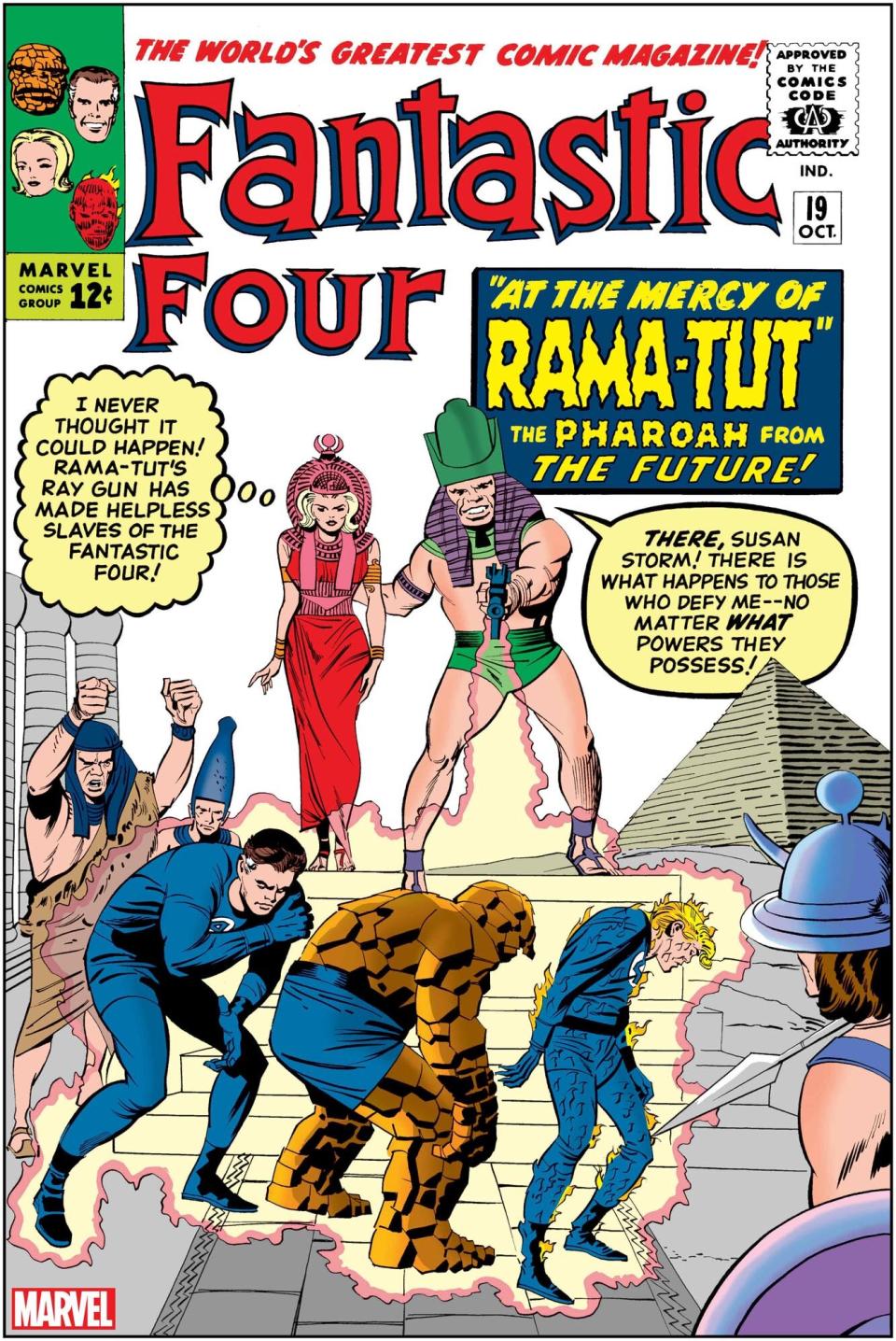
Jack Kirby for Marvel Comics The cover of 'Fantastic Four' #19, by Stan Lee and Jack Kirby.
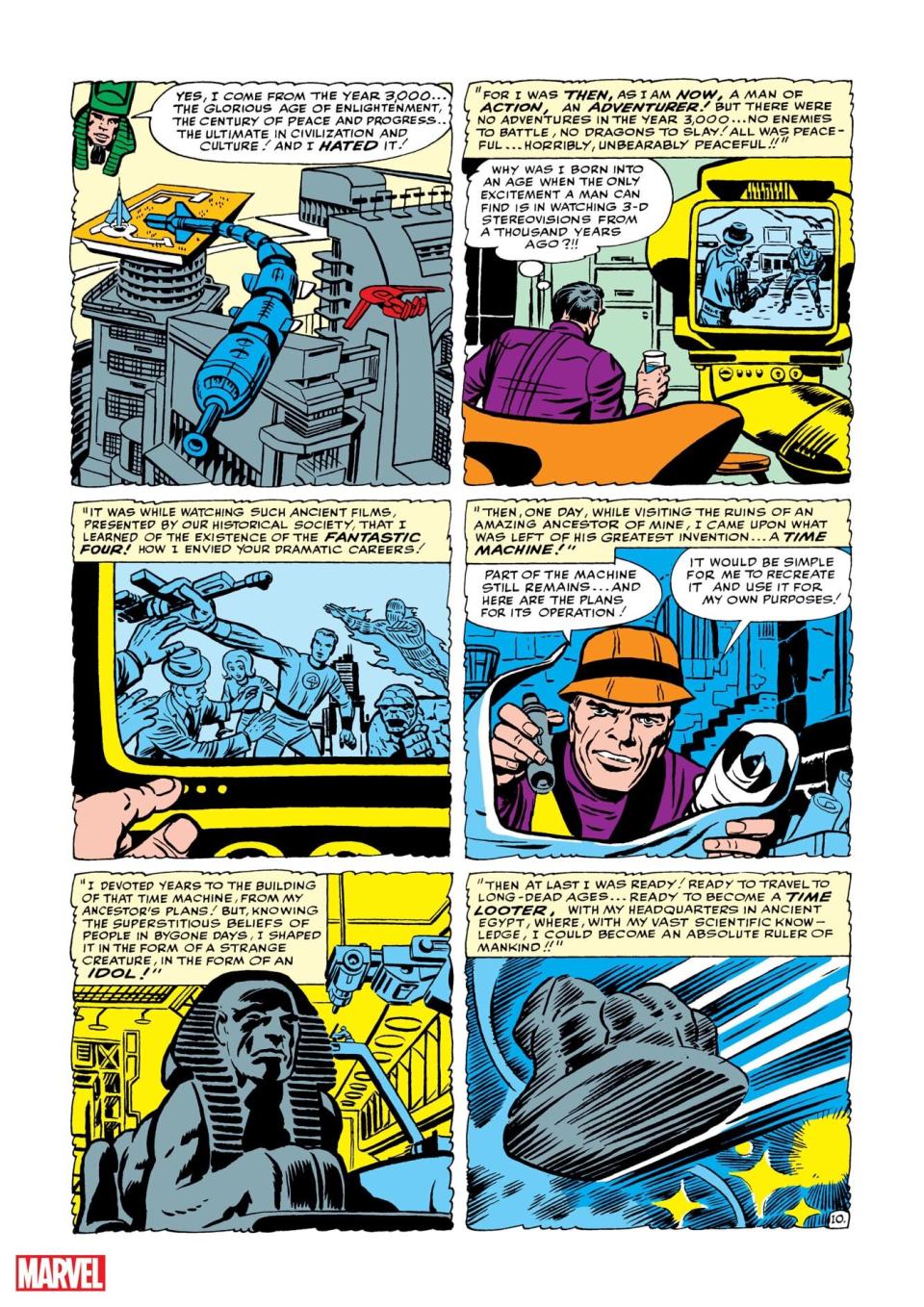
Marvel Comics Kang's first journey into the past, as depicted by Stan Lee and Jack Kirby in 'Fantastic Four' #19.
Kang wasn't even Kang at first. The original canonical appearance of this multi-faceted character came in the pages of Lee and Kirby's Fantastic Four. Issue #19 of the formative Marvel superhero comic saw Reed Richards take his family on a trip to ancient Egypt after discovering hieroglyphics that convinced him the pharaohs may have had a cure for blindness. They soon found themselves face-to-face with Egyptian ruler Rama-Tut, who astonished them all by revealing that he already knew of the Fantastic Four, and had access to futuristic technology beyond even Reed's imagination.
This was because Rama-Tut was a time traveler from the 40th century, and the great Egyptian sphinx was his time machine. The Fantastic Four eventually got the upper hand and made it back to their own time, but that wasn't the last they saw of Rama-Tut. He was officially retconned as a variant of Kang the Conqueror in later issues of Avengers and remains an integral part of the Kang identity to this day. After all, though Kang is usually described as "the Conqueror," Rama-Tut is a ruler. His status quo is one of peace and prosperity, and thus Kang has been known to slide back into ancient Egypt and reassume the Rama-Tut identity whenever he needs a break. The sphinx time machine is also an incredibly cool visual concept, and later artists like Carlos Pacheco (in Avengers Forever) and Carlos Magno (in the recent five-issue Kang the Conqueror miniseries) have ably improved on Kirby's original design.
As a side note, Kang's origin as Rama-Tut demonstrates the complexity of integrating the Fantastic Four into the MCU. Marvel super-producer Kevin Feige just told EW that he wants the Fantastic Four to be "a big pillar of the MCU going forward, just the way they've been in the comics," but the whole reason the Fantastic Four are such an integral part of Marvel comics is that they were the pioneers of this new superhero age. Certain icons like Captain America and Namor the Sub-Mariner predate them, but the first 100 issues of Lee and Kirby's Fantastic Four introduced a plethora of characters and concepts that have gone on to fuel Marvel creativity and continuity for decades. Many of these (including but not limited to Black Panther, the Inhumans, and ol' Kang here) are already a part of the MCU, and thus it will be a difficult task to make the Fantastic Four as important on screen as they are in comics history.
Kang, the Conqueror
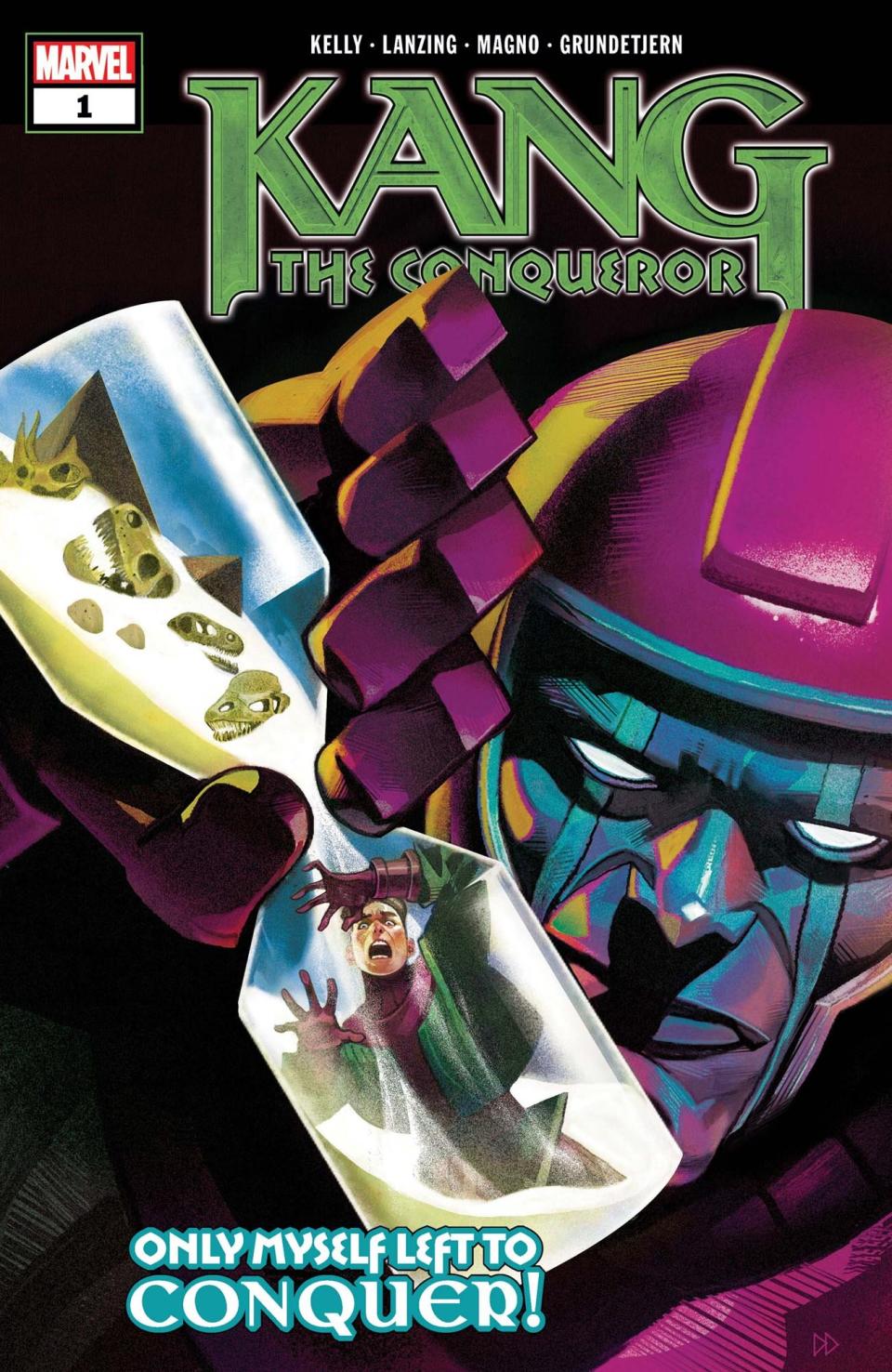
Marvel Comics The cover to 'Kang the Conqueror' #1 by Colin Kelly, Jackson Lanzig, and Carlos Magno.
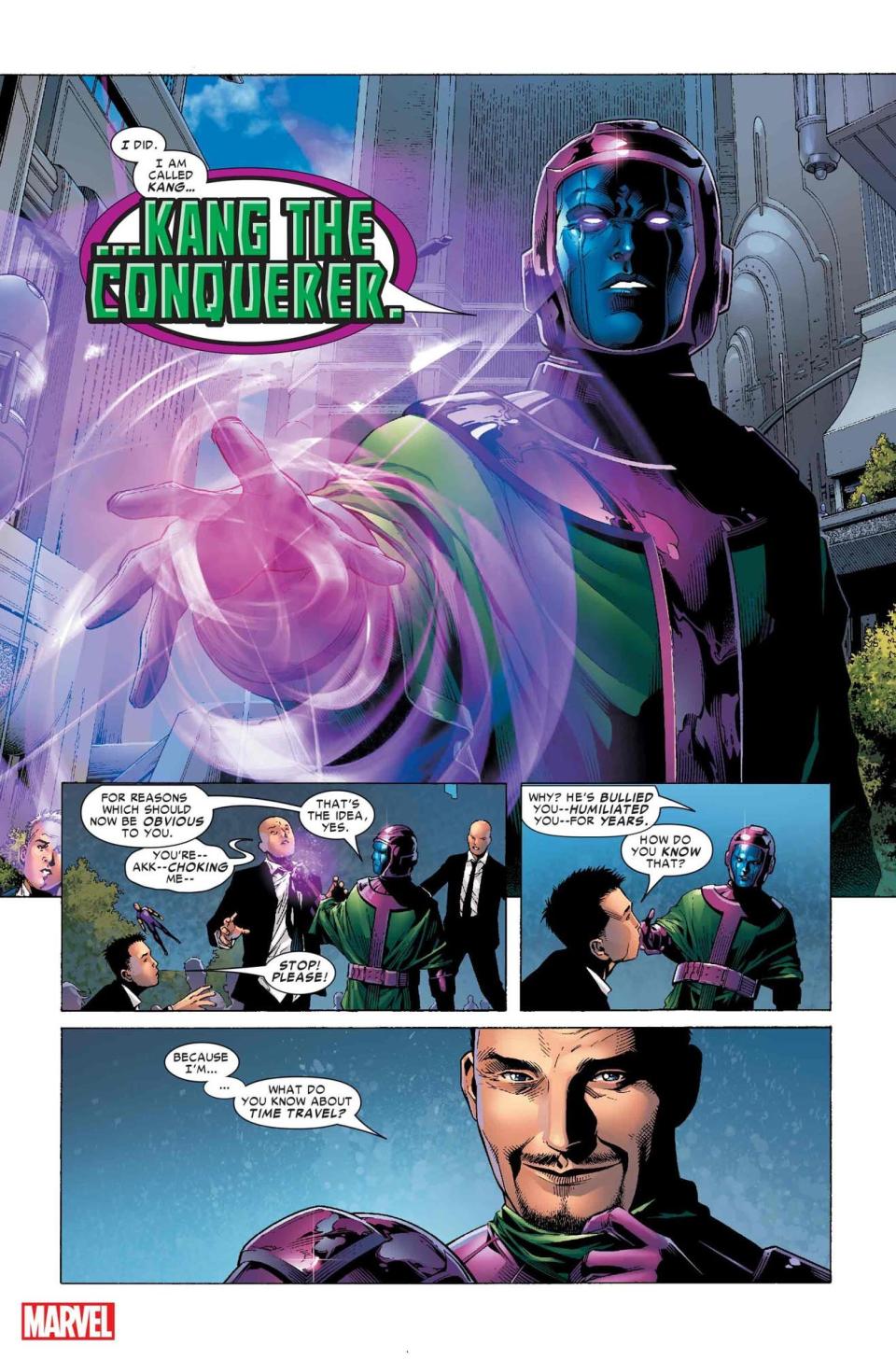
Jim Cheung for Marvel Comics Kang in 'Young Avengers' #2 by Allan Heinberg and Jim Cheung.
A year after Rama-Tut debuted in the pages of Fantastic Four, Kang's main identity was introduced by Kirby and Lee in Avengers #8. This is the iconic design — complete with green tunic, purple armor, and blue face mask — that endures to this day, and that Majors took to the screen in Quantumania. This is Kang the Conqueror, the character's most common identity.
Unlike Rama-Tut, who seeks to subjugate the ancient past to his future technology, or Immortus, who seeks to preserve the future (see below), Kang the Conqueror strives to dominate the multiverse through blood and strength. Wherever he lands (be it the ancient past, the far future, or the Quantum Realm), he seeks to conquer. In his first appearance, Kang threatened the United Nations with global takeover, and successfully impressed the Avengers with his transparent hover chair and nearly impenetrable force field. He was eventually thwarted by the Avengers — particularly Hank Pym and Janet Van Dyne, which adds extra resonance to his first MCU appearance coming in an Ant-Man and the Wasp movie.
Kang returned to menace the Earth with a gigantic sword-shaped spaceship in the 2001 Avengers storyline "Kang Dynasty" — which, though it shares a title with the next planned Avengers movie, probably won't have much in common with that project since it only features Kang the Conqueror and his son Marcus as the Scarlet Centurion, rather than the whole gamut of Kangs that are assembling in the MCU.
Even more than conquering Earth, Kang has sought to conquer himself. The 1986 Avengers issues #267-269 by writer Roger Stern and artist John Buscema introduced the Council of Kangs, which sought to narrow down the many Kang variants that had been created by the character's constant time travel. Taking a page from the film Highlander, released that same year, this storyline saw the Kangs kill each other until only one was left. Something like this has apparently already happened in the MCU, with He Who Remains as the one left standing. But after Sylvie (Sophia Di Martino) killed He Who Remains in the season 1 finale of Loki, all those various Kangs have come back into existence along with the multiverse.
Kang, the Immortal
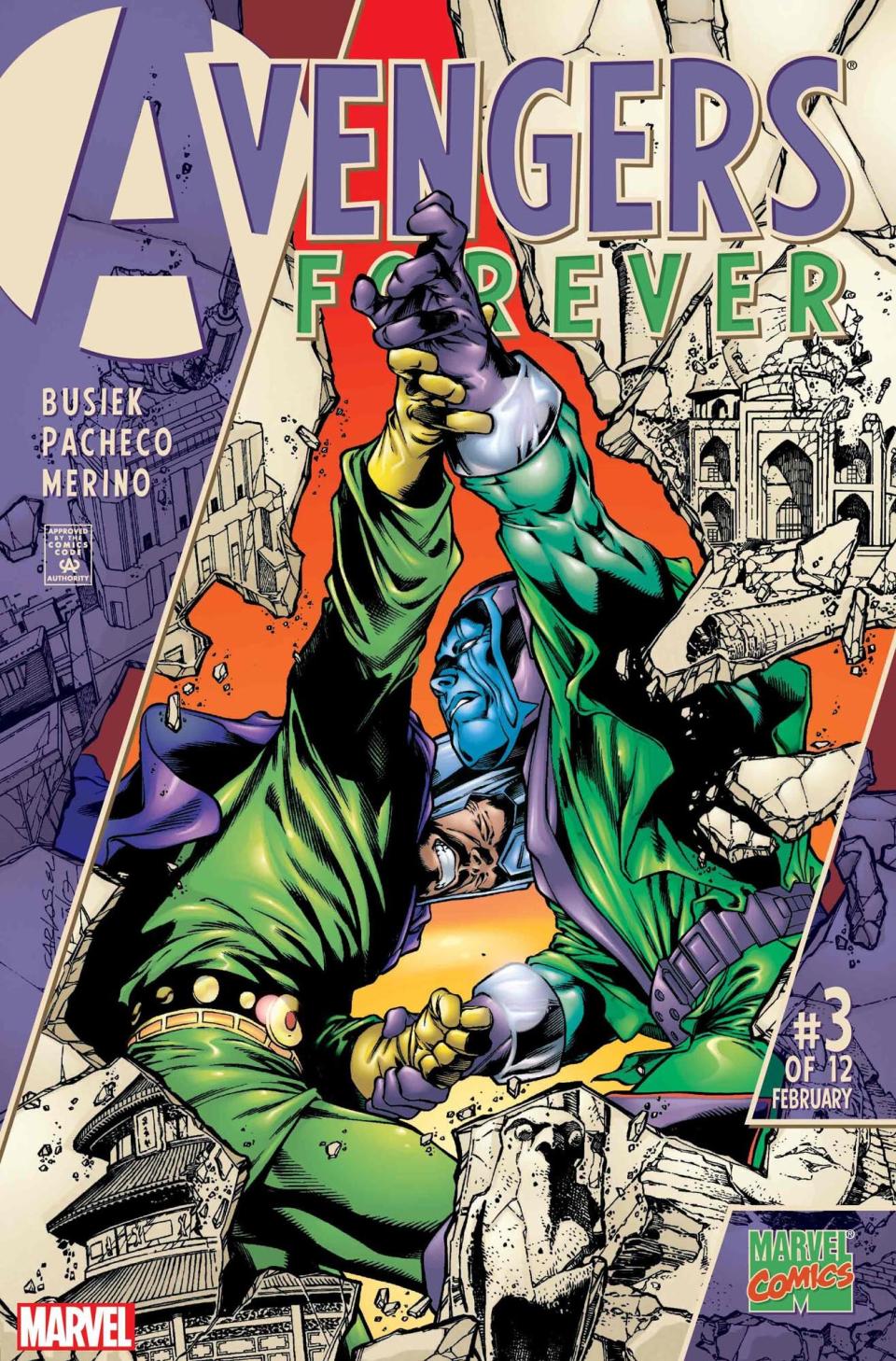
Carlos Pacheco for Marvel Comics Kang vs. Immortus on the cover of 'Avengers Forever' #3 by Kurt Busiek and Carlos Pacheco.

Carlos Pacheco for Marvel Comics Immortus gets the drop on Kang in 'Avengers Forever' by Kurt Busiek and Carlos Pacheco.
If there's one thing Kang despises more than anything, it's his own destiny. Introduced just two months after Kang in the pages of Avengers #10, Immortus is an all-knowing master of time who rules over Limbo, an abstract realm outside of normal reality, and strives to protect the future. Like Rama-Tut before him, Immortus was eventually retconned (in Giant-Size Avengers #3) to be another variant of Kang. Not just that, but subsequent stories have made clear that the old, wizened Immortus is Kang's endpoint future self — and Kang hates that. After all, what kind of bloodthirsty conqueror wants to become a static wizard?
One of the single best Kang comic stories is the 12-issue series Avengers Forever by writer Kurt Busiek and artist Carlos Pacheco, and it revolves around a cosmic struggle between Kang and Immortus. Immortus wants to protect the multiverse from dangerous realities where the Avengers become an interstellar empire, while Kang wants to prevent himself from becoming Immortus, and a team of time-displaced heroes (including the Wasp, two different versions of Hank Pym, and a disillusioned characterization of Captain America from the '70s) are stuck in the middle. Given its depiction of a war between different Kang variants and its use of the Time Keepers and the Time Variance Authority, Avengers Forever is essential reading for anyone seeking to understand the source material of the MCU's take on Kang. It's also a hell of a good read on its own — when Pacheco died last year of ALS, many hailed Avengers Forever as his artistic masterpiece.
It's worth noting that Immortus shares several similarities with Majors' portrayal of He Who Remains in Loki, such as his flowing purple robes, throne at the end of time, and desire to preserve the integrity of the space-time continuum. But even though He Who Remains is dead, Immortus still seems likely to be a factor in the rest of the MCU's Kang saga, with Majors wearing something very similar to his comic outfit in the Quantumania credits scene. If there's one thing to learn from Kang's comic stories, it's to never underestimate Immortus.
Kang, the Hero
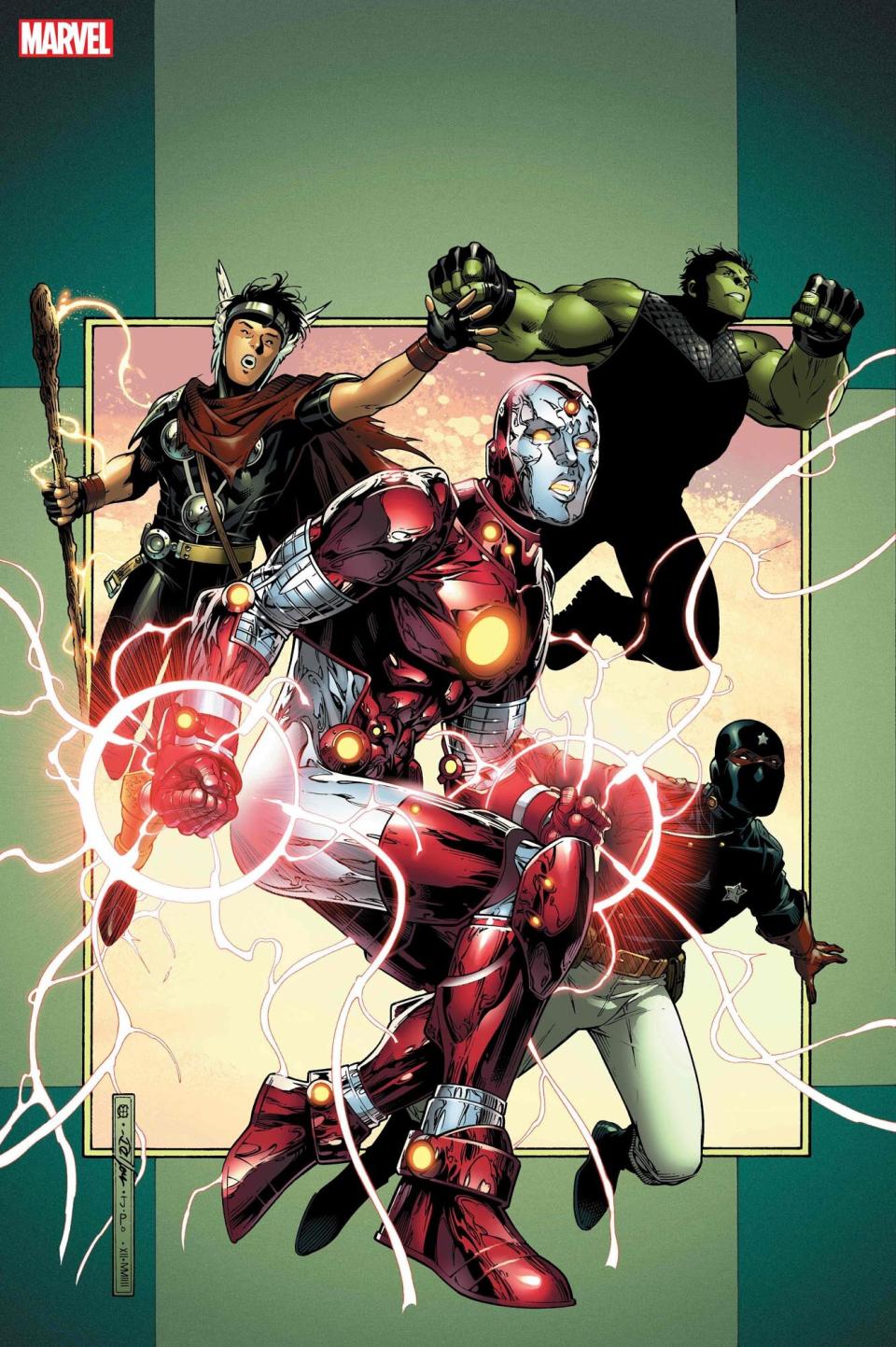
Jim Cheung for Marvel Comics The cover of 'Young Avengers' #3 by Allan Heinberg and Jim Cheung.
Could Kang have turned out differently and become a superhero, rather than a supervillain? After several failed attempts to change his future, Kang has pivoted in recent years to trying to change his past. But as always, there are unintended consequences. Traveling back in time to his own adolescence to get revenge on his childhood bullies, Kang instead inspired his younger self to embark upon his own time travel and become the superhero known as Iron Lad. This is the catalyst event that set Allan Heinberg and Jim Cheung's original Young Avengers comic in motion; the titular team was originally assembled and led by Iron Lad, until he had to return to his own era and (like so many other Kangs before him) make peace with his role in the timeline.
It should be clear by now that the MCU is gearing up for a Young Avengers project at some point, though it's less clear when exactly that will happen. Canonical team members Kate Bishop/Hawkeye (Hailee Steinfeld), Cassie Lang/Stature (Kathryn Newton), and America Chavez (Xochitl Gomez) seem ready to go, but the Scarlet Witch's twin sons remain pre-adolescent/non-existent, and they're pretty important to the team. Marvel Studios still hasn't announced anything official… is that because the Kang saga will lead to the creation of a younger, more heroic Kang who will go on to assemble the team? It seems possible.
Kang's heroic younger self was also the focal point of the 2021 Kang the Conqueror miniseries by Colin Kelly, Jackson Lanzig, and Carlos Magno. Rather than founding the Young Avengers, this version of Iron Lad used his technology to try to save the timeline (and his true love, Ravonna) from the depredations of his older selves. Timed to the release of Loki season 1, Kang the Conqueror is a good starting point for anyone looking to refresh themselves on Kang's complicated history.
Other things to know
One other Kang variant who seems poised to make a big impact on the MCU is Victor Timely. That's the bespectacled, besuited man whom Loki (Tom Hiddleston) and Mobius (Owen Wilson) glimpse in the final Quantumania post-credits scene. Introduced in Avengers Annual #21 by Mark Gruenwald and Herb Trimpe, Timely is a persona Kang took on when he traveled to the early 20th century and founded a town of the same name in Wisconsin, eventually becoming its mayor and using his advanced technology to further his own goals. Other than that, he doesn't have a big comics footprint, though he looks to play a major role in Loki season 2. As a fun bit of meta trivia, Timely's name refers not just to Kang's time travel, but to the original name of Marvel Comics. The publisher was known as Timely Comics in the '40s when Captain America, Namor, and the original Human Torch were created.
It also seems likely at this point that the MCU's Kang storyline will be tied into the incursions storyline. Though mentioned briefly in Quantumania and Doctor Strange in the Multiverse of Madness, incursions have not yet been explained in depth in the MCU. Suffice it to say that they represent the gradual destruction of the multiverse, as parallel realities start violently crashing into each other at the point of Earth. For full details on what they entail, check out Jonathan Hickman's Avengers/New Avengers saga, available on Marvel Unlimited and in a new line of "Complete Collection" volumes, and its climax in Secret Wars, which has already been announced as the follow-up movie to Avengers: The Kang Dynasty. Will the Kangs take the place of the Ivory Kings as the cause of incursions, or will one or more of them instead be the "Rabum Alal" figure who tries to preserve reality from the incursions? That remains to be seen.
Want more movie news? Sign up for Entertainment Weekly's free newsletter to get the latest trailers, celebrity interviews, film reviews, and more.
Related content:

